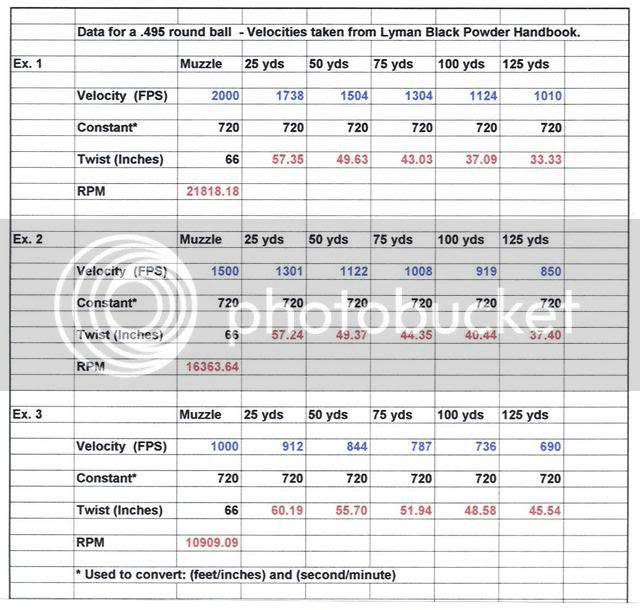Runner said:
Pletch, I studied ballistics a long time ago. If I could point you to a current source, I would, but I have not read anything on ballistics for many years. I have very little interest anymore. My days of trying to stabilize little bitty pills powered by big loads of powder are long past. . . .
Runner,
I have been playing with spreadsheets since 4:30 this morning trying to make sense of this. I could not get past the idea that a ball can increase its twist rate. I still can find no ballistics that shows this. So I reworked the formula for calculating linear twist rates, and it finally hit me. It is not that the ball somehow picks up twist rate. There is no energy added.
In general terms to calculate twist, you divide distance traveled by the rpm. Since the distance traveled is decreased and the rpm (for practical terms) is not, then the distance per revolution is smaller - hence a faster linear twist. I had been trying to get my mind around an acceleration taking place, and all along it was simply a division with a gradually decreasing number.
I attached a spreadsheet that uses a .495 ball traveling at velocities provided by Lymans BP Handbook. I set up three examples with different starting velocities. The numbers in blue are from the book. The red "twist" numbers are calculated by dividing by the original barrel twist. I realize that I should be dividing by a slightly decreasing twist rate, but I could find no way to determine the rate at which the rpm falls off.
The relationship between the twist and rpm seems to be a direct relationship. If the velocity is decreased by one half, then the linear twist in inches is also cut by one half.
The faster we try to drive the ball the more pronounced this effect is, because the faster we drive a round ball the faster the velocity falls off. The chart at the bottom where the velocity is slower shows less of a change.
There are a number of interesting things that can be seen when making comparisons across the three examples. For instance:
ex. 1 ---125 yd ---velocity 1010 ---- 33" twist
ex. 2 ---75 yd ----velocity 1008 ---- 44" twist
ex. 3 ---muzzle ---velocity 1000 ---- 66" twist
Does this mean that there are stability issues with this ball at various distances away from the muzzle. Sometimes when you learn a new thing, you get more puzzled instead of less.
Thanks, Runner. Whether you meant to or not, you pushed me to study this. I knew that the decrease of bullet rpm was slower than the decrease in velocity. I just didn't connect that dividing a gradually decreasing number would lead to a faster linear twist. (BTW the chart is based on NO decrease in rpm at all.)
Regards,
Pletch






